第77章 IV(10)
These last are the words of Regnault, as cited by Mr. Lewes, whose intelligent discussion of this and many of the most interesting physiological problems I strongly recommend to your attention.
This single illustration covers a wider ground than the special function to which it belongs. We are learning that the chemistry of the body must be studied, not simply by its ingesta and egesta, but that there is a long intermediate series of changes which must be investigated in their own light, under their own special conditions.
The expression "sum of vital unities" applies to the chemical actions, as well as to other actions localized in special parts; and when the distinguished chemists whom I have just cited entitle their work a treatise on the immediate principles of the body, they only indicate the nature of that profound and subtile analysis which must take the place of all hasty generalizations founded on a comparison of the food with residual products.
I will only call your attention to the fact, that the exceptional phenomenon of the laboratory is the prevailing law of the organism.
Nutrition itself is but one great catalytic process. As the blood travels its rounds, each part selects its appropriate element and transforms it to its own likeness. Whether the appropriating agent be cell or nucleus, or a structureless solid like the intercellular substance of cartilage, the fact of its presence determines the separation of its proper constituents from the circulating fluid, so that even when we are wounded bone is replaced by bone, skin by skin, and nerve by nerve.
It is hardly without a smile that we resuscitate the old question of the vis insita of the muscular fibre, so famous in the discussions of Haller and his contemporaries. Speaking generally, I think we may say that Haller's doctrine is the one now commonly received; namely, that the muscles contract in virtue of their own inherent endowments.
It is true that Kolliker says no perfectly decisive fact has been brought forward to prove that the striated muscles contract with. out having been acted on by nerves. Yet Mr. Bowman's observations on the contraction of isolated fibres appear decisive enough (unless we consider them invalidated by Dr. Lionel Beale's recent researches, tending to show that each elementary fibre is supplied with nerves; and as to the smooth muscular fibres, we have Virchow's statement respecting the contractility of those of the umbilical cord, where there is not a trace of any nerves.
In the investigation of the nervous system, anatomy and physiology have gone hand in hand. It is very singular that so important, and seemingly simple, a fact as the connection of the nerve-tubes, at their origin or in their course, with the nerve-cells, should have so long remained open to doubt, as you may see that it did by referring to the very complete work of Sharpey and Quain (edition of 1849), the histological portion of which is cordially approved by Kolliker himself.
Several most interesting points of the minute anatomy of the nervous centres have been laboriously and skilfully worked out by a recent graduate of this Medical School, in a monograph worthy to stand in line with those of Lockhart Clarke, Stilling, and Schroder van der Kolk. I have had the privilege of examining and of showing some of you a number of Dr. Dean's skilful preparations. I have no space to give even an abstract of his conclusions. I can only refer to his proof of the fact, that a single cell may send its processes into several different bundles of nerve-roots, and to his demonstration of the curved ascending and descending fibres from the posterior nerveroots, to reach what he has called the longitudinal columns of the cornea. I must also mention Dr. Dean's exquisite microscopic photographs from sections of the medulla oblongata, which appear to me to promise a new development, if not a new epoch, in anatomical art.
It having been settled that the nerve-tubes can very commonly be traced directly to the nerve-cells, the object of all the observers in this department of anatomy is to follow these tubes to their origin. We have an infinite snarl of telegraph wires, and we may be reasonably sure, that, if we can follow them up, we shall find each of them ends in a battery somewhere. One of the most interesting problems is to find the ganglionic origin of the great nerves of the medulla oblongata, and this is the end to which, by the aid of the most delicate sections, colored so as to bring out their details, mounted so as to be imperishable, magnified by the best instruments, and now self-recorded in the light of the truth-telling sunbeam, our fellow-student is making a steady progress in a labor which I think bids fair to rank with the most valuable contributions to histology that we have had from this side of the Atlantic.
It is interesting to see how old questions are incidentally settled in the course of these new investigations. Thus, Mr. Clarke's dissections, confirmed by preparations of Mr. Dean's which I have myself examined, placed the fact of the decussation of the pyramids-- denied by Haller, by Morgagni, and even by Stilling--beyond doubt.
So the spinal canal, the existence of which, at least in the adult, has been so often disputed, appears as a coarse and unequivocal anatomical fact in many of the preparations referred to.